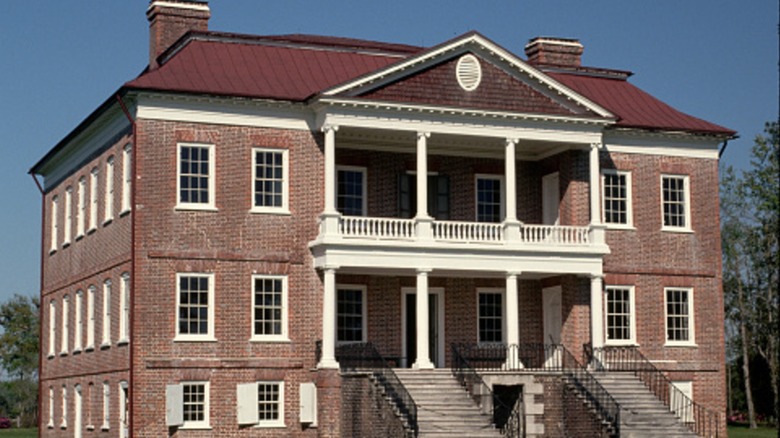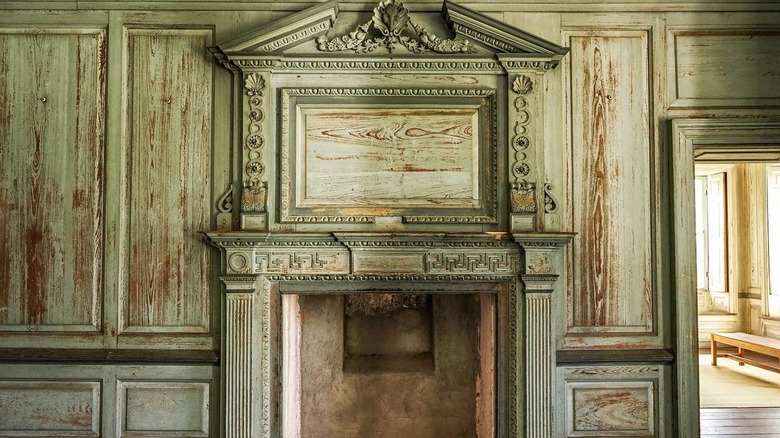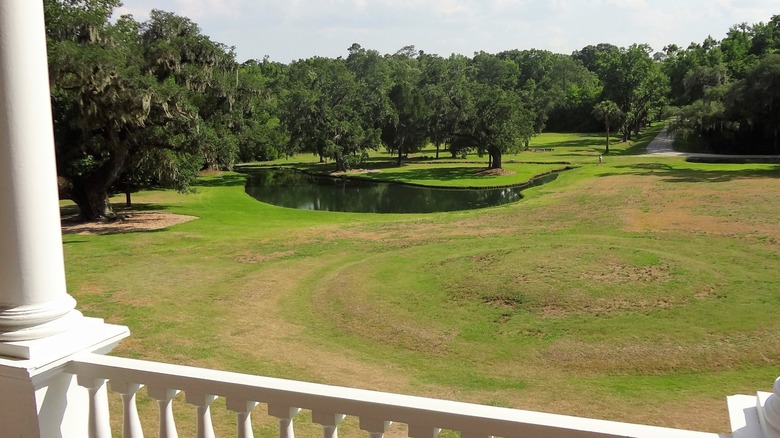America's Oldest Unrestored Plantation Home Is Its 'Most Significant, Undisturbed Historic Landscape'
America's plantation homes below the Mason-Dixon Line are often as pretty as they are grand. Many are recognizable by their imposing structures, which are supported by iconic Doric columns, and their large expanses of well-manicured lawns and lush grounds. Some, like Magnolia Plantation and Gardens and Sunbury Plantation, date as far back as the 1600s and have been refurbished to depict particular bygone eras.
However, unlike those historical sites that host occasions like weddings or have even been converted into a plantation golf course, an exploration of Drayton Hall in Charleston, North Carolina — a popular southern city that blends European appearance with southern charm — has been deemed one of the city's most "informative, professional and enriching" historic house tours by Conde Nast Traveller. It's also no glossy remodel; the plantation home is unrestored, with its interior comprised of several sun-washed, unfurnished rooms, allowing the original paneling and inlay to take center stage while providing visitors with a bare look at the house's spaces.
While built in part by enslaved people over a four-year period from 1738 to 1742 and used as an indigo and rice plantation, this grim element of the home's past isn't a reason to look away. Rather, it offers an opportunity to learn more about this poignant moment from America's past. Because the manor and accompanying buildings haven't been restored to one particular era, visitors are able to learn about a wide breadth of experiences that the home has witnessed, including those of family, art and innovation, and war. Its impressive collections from the 18th and 19th centuries bear witness to these stories, and its expertly guided tours do a great job of enlightening visitors about the home's legacy.
Tour the home and educational facilities
A tour of the great hall is truly a step into the home's past, as the imperfections and changes that the structure has weathered over the centuries, from the cellar to the second floor, have been left alone. As noted in Architectural Digest and recognized by the National Trust for Historic Preservation, the mansion's elaborate flourishes, such as its double portico, extravagant double staircase, and ornamental ceilings, all remain in place. Drayton Hall's 630-acre property also includes a cluster of buildings that serve as museum galleries where you can gain further insights into the plantation's history. The Stephen and Laura Gates Exhibit gallery houses a series of finds, including antiques, manuscripts, and archeological objects. Items such as a tea set and a pair of marble-topped tables illuminate the Drayton family's privileged position in the Antebellum South.
In contrast to the enriched lives that the planter class enjoyed at that time, you can also visit a small home where the caretakers lived, which has been repurposed as an interpretive space to show what life was like for those who lived and worked there. First-hand accounts from now-deceased Richmond Bowens Jr., a long-time caretaker whose grandfather was enslaved on the property, have uncovered interesting information about home upkeep in the early 19th century, such as the use of simple flour paste to hang wallpaper.
The educational opportunities provided at Drayton Hall don't stop there, though. The George McDaniel education center, a large building with a capacity of 90 people, offers student and adult classes that have been designed in tandem with both the Drayton and Bowens families' input with the goal of painting a more complete picture of the hall's historic impact.
Explore the grounds and take in the views
Flanked by the Ashley River to the west, Drayton Hall sits on sprawling piece of land with verdant meadows and thriving oak trees, one of which dates back to 1800 and shades an inviting courtyard garden that mirrors the same plants the Drayton family grew at that time. The view from the house's veranda looks out on the resplendent grounds that appear drawn with the broad strokes of a virtuoso painter. Remnants of vanished buildings can be seen on the front lawn, and a lagoon shimmers nearby. Notably, the oldest known African American cemetery has been preserved on the property as well. Both marked and unmarked graves lie there, including, per his wishes, Richmond Bowen Jr., who has a lovely headstone marking his place of rest.
Drayton Hall is located just a 15-minute drive from Charleston International Airport and 13 miles from downtown, where you'll find one of the world's most charming main streets. Parking is free, and you may want to arrive 25 minutes before your tour to check in and use the restroom. Although tour combinations vary, the main hall is open from 9 a.m. to 5 p.m. At the gate, tickets are, as of this writing, $15 for children and $29 for adults. A discount of $3 is available online, and children under seven are free.


